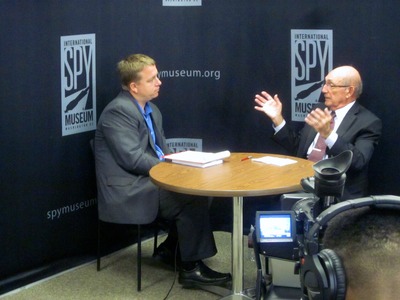Secret opticsby Dwayne A. Day
|
| Pressel’s goal was to not only explain what he and his fellow engineers at Perkin-Elmer Corporation did, but also to give credit to the often brilliant and always hard-working people who toiled away in secrecy on a major project at the same time that NASA was preparing to send astronauts to the Moon. |
Fortunately, this isn’t always the case. In the fall of 2011, the National Reconnaissance Office (NRO) declassified two major Cold War reconnaissance satellite programs, the GAMBIT and HEXAGON. GAMBIT, which operated from 1963 until 1984, was a high-resolution camera system that peered down on the Soviet Union taking incredibly detailed photographs. HEXAGON, which involved 19 operational satellites launched between 1971 and 1985, was powerful in two ways: it also took highly detailed photographs and had the ability to see and map, in stereo, the whole landmass of the Earth, making it impossible for America's adversaries to hide anything from sight.
The NRO released a large number of documents about both programs, including lengthy official histories (although the release of documents has essentially stopped for the past year). But even that declassified material has huge holes in it, such as detailed discussion of how the subsystems were built, who built them, and how they overcame problems during design. As one example, we know that the GAMBIT-1 (KH-7) and the GAMBIT-3 (KH-8) systems actually flew, but the released documents provide very little information on the rejected GAMBIT-2 design. Nor do the official histories reveal much about the development of HEXAGON’s immensely complex camera system, or even the spacecraft propulsion and control system that supported it in orbit.
Phil Pressel, who designed a key part of the powerful HEXAGON camera system, last year published a book about its development Meeting The Challenge: The Hexagon KH-9 Reconnaissance Satellite (see: “Working in the shadows: Phil Pressel and the Hexagon spy camera,” The Space Review, October 28, 2013, and “Eyes of the Big Bird,” The Space Review, October 13, 2013). Pressel’s goal was to not only explain what he and his fellow engineers at Perkin-Elmer Corporation did, but also to give credit to the often brilliant and always hard-working people who toiled away in secrecy on a major project at the same time that NASA was preparing to send astronauts to the Moon.
Last month Pressel was interviewed at The International Spy Museum in Washington, DC by Vince Houghton about his work on the HEXAGON. That interview is now publicly available on YouTube:
During the interview Pressel discusses many aspects of the program, from the spooky way that his company won the bid—they briefed the CIA in a safe house in Virginia in the dead of night—to how they solved the problem of sending film through the cameras at over 500 centimeters per second. He also talks about how he wrote his book manuscript while HEXAGON was still classified, using a secure laptop and keeping his notes locked in a safe.
Hopefully Pressel’s book is the first but not the last written by people involved in the HEXAGON and GAMBIT programs, and that in the future we will see more interviews like the one conducted by the Spy Museum.
